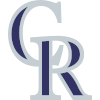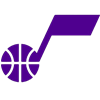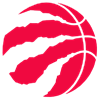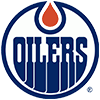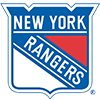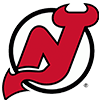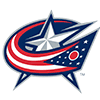Having a plan is a critical component of roster management. Deducing what you expect your team to do, so you can decide what you're going to need, is one of the keys to planning. One of the major advancements in next-level analysis is determining what to expect.
Due to the nature of how the season has played out, much of the discussion has revolved around the influx of stolen bases. Power, or more specifically home runs, have taken the back seat. Yet homers contribute directly to four categories, while steals are essentially singular, though they play a part in runs.
There are a few methods you can use to judge expected home runs. Perhaps the easiest is the Statcast Home Runs Leaderboard. Statcast compares the launch angle, exit velocity and trajectory of all batted balls to a huge database of past batted balls to discern the probability of various outcomes. They also have a version factoring in environmental factors and venue dimensions.
A method I like to use in parallel is one which I have frequently detailed in this space. Several years ago, friend and colleague Mike Podhorzer from Fangraphs published a study showing a strong correlation between a player's HR/FB (home run per fly ball) and average flyball distance. I did, and still do, find it fascinating that the better correlation is with average flyball distance and not average home run distance. I have also tried to improve the correlation by applying park factors, but to no avail.
Having a plan is a critical component of roster management. Deducing what you expect your team to do, so you can decide what you're going to need, is one of the keys to planning. One of the major advancements in next-level analysis is determining what to expect.
Due to the nature of how the season has played out, much of the discussion has revolved around the influx of stolen bases. Power, or more specifically home runs, have taken the back seat. Yet homers contribute directly to four categories, while steals are essentially singular, though they play a part in runs.
There are a few methods you can use to judge expected home runs. Perhaps the easiest is the Statcast Home Runs Leaderboard. Statcast compares the launch angle, exit velocity and trajectory of all batted balls to a huge database of past batted balls to discern the probability of various outcomes. They also have a version factoring in environmental factors and venue dimensions.
A method I like to use in parallel is one which I have frequently detailed in this space. Several years ago, friend and colleague Mike Podhorzer from Fangraphs published a study showing a strong correlation between a player's HR/FB (home run per fly ball) and average flyball distance. I did, and still do, find it fascinating that the better correlation is with average flyball distance and not average home run distance. I have also tried to improve the correlation by applying park factors, but to no avail. The simplest version is the best, at least for now.
Remember way back when in math class, you had to learn about slope and y-intercept? When would I ever need to use y = mx + b, you may have thought to yourself? Well, with such a strong correlation to average flyball distance, simple algebra can reveal a player's expected HR/FB mark. From that, an xHR can be extrapolated.
Regardless of how they're derived, expected metrics are not perfect. They're best treated as a "hot tip." Sure, they're rooted in science, but the expectation does not always manifest.
Still, having a better feel for what to expect from your batters can help formulate a plan. What follows is a review of several players whose homers have fallen shy of expectations, then a survey of some batters exceeding expectations. If your roster has a few of the latter, the pace your team accumulates homers and the associated categories may wane, which will need to be accounted for in your strategy over the last quarter of the season. If your team features some of the former, there is a chance for organic improvement. This does not preclude devising a plan to add more power, but it does help set the framework.
Even though the Statcast numbers account for venue, and my own research doesn't show improvement by incorporating park factors, the following table strongly suggests there is some park bias. It's admittedly a crude study, requiring a more detailed approach in the offseason, but here is a look at a team's aggregate fortune, home and away. The data is presented in index form, with 100 indicating the team's actual and expected homers are identical. A number below 100 indicates the team has hit fewer homers than expected, while a number over 100 shows they have cranked more long balls than expected.
| Team | Home | Away | |
|---|---|---|---|
| 1 | Arizona | 78 | 103 |
| 2 | Atlanta | 92 | 97 |
| 3 | Baltimore | 86 | 100 |
| 4 | Boston | 94 | 94 |
| 5 | Chicago Cubs | 114 | 106 |
| 6 | Chicago White Sox | 107 | 99 |
| 7 | Cincinnati | 118 | 93 |
| 8 | Cleveland | 91 | 91 |
| 9 | Colorado | 105 | 92 |
| 10 | Detroit | 87 | 89 |
| 11 | Houston | 96 | 94 |
| 12 | Kansas City | 62 | 90 |
| 13 | Los Angeles Angels | 104 | 98 |
| 14 | Los Angeles Dodgers | 112 | 94 |
| 15 | Miami | 91 | 102 |
| 16 | Milwaukee | 96 | 92 |
| 17 | Minnesota | 90 | 93 |
| 18 | New York Mets | 100 | 99 |
| 19 | New York Yankees | 122 | 93 |
| 20 | Oakland | 91 | 95 |
| 21 | Philadelphia | 113 | 96 |
| 22 | Pittsburgh | 74 | 109 |
| 23 | San Diego | 107 | 93 |
| 24 | San Francisco | 97 | 89 |
| 25 | Seattle | 100 | 94 |
| 26 | St. Louis | 90 | 102 |
| 27 | Tampa Bay | 96 | 101 |
| 28 | Texas | 93 | 80 |
| 29 | Toronto | 105 | 94 |
| 30 | Washington | 93 | 95 |
Drawing conclusions based on three-quarters of a season of data isn't the sagest approach. That said, sorting on the home data shows that parks known to suppress power also generate more expected homers. Meanwhile, parks with the reputation of embellishing power also play as the most fortunate. Based on this crude study, park characteristics have an influence on actual versus expected homers, so a player may not be lucky or unlucky, his outcomes could simply be an artifact of his home venue. This isn't to say there isn't good and bad fortune, just that it isn't always clear if the player's actual and expected levels are out of sync.
Too Few Homers?
Ronald Acuna: Let's get this one out of the way early. Statcast has Acuna on pace, but his average flyball distance shorts him about seven dingers. On the other hand, fewer homers means more chances to steal. This is off-topic, but I generate my own rest-of-season projections and expected earnings. When I ran the numbers last weekend, Acuna checked in as the first $60 player I can recall.
Adolis Garcia: Like Acuna, Statcast thinks he's right on pace. However, Garcia's average flyball distance is 17th furthest among hitters with at least 150 plate appearances, but he only has the 27th-best HR/FB mark. It can't be just Globe Life Field either, which the chart above suggests plays as "unlucky" -- for instance, Corey Seager's actual and expected homers are consistent.
Anthony Santander, Ryan Mountcastle and Austin Hays: Here is the first real application of the above table. As a team, the Orioles have been unlucky at home and neutral on the road, so maybe there is something about Camden Yards, which had significant changes made to its dimensions in left field in 2022. For those curious, Adley Rutschman's numbers are neutral while Gunnar Henderson will appear on the lucky list. It could be a handedness scenario, though the more data is parsed, the more error is introduced. This can be smoothed by researching multiple seasons. Keep in mind conventional park indices are based on three-year averages. The issue here is those left-field renovations only generate two seasons of data. The take-home lesson isn't to ignore the possible misfortune for Santander, Mountcastle and Hays, but don't anticipate the kind of big spike they might benefit from in a park playing more neutral for luck.
MJ Melendez, Salvador Perez, Bobby Witt: Here is another case of a troika of teammates incurring some bad luck... or maybe not? Kauffman Stadium suppresses power, though it is slightly favorable for runs since the vast expanse in the outfield is tough to cover, hence there are fewer flyball outs than other venues. Based on the table, Kauffman Stadium displays the biggest discrepancy between actual and expected homers. Specifically, Kansas City has 60 homers at home, with a 96.1 xHR. The club has also experienced misfortune on the road though, so some of the bad luck for Melendez, Perez and Witt can be real.
Spencer Torkelson and Riley Greene: This is interesting, as the Tigers as a team have been equally unfortunate in and out of Comerica Park. This speaks towards needing to expand the crude study presented above to include the opposition's actual to expected ratio, much in the way park factors are computed. For now, it would not shock me if Torkelson and Greene picked up their power pace a bit.
Francisco Lindor: Lindor is intriguing since his Statcast data is close, but based on average flyball distance, his 22 homers should be 30. Citi Field isn't the answer since it is close to neutral for homers, despite playing as one of the top pitching venues in MLB. The luck index is also close to neutral, which hints Lindor's misfortune is real.
Mookie Betts: By Statcast, Betts has been a bit lucky, but his average flyball distance portends to 38 homers, seven more than he's stroked. The table indicated Dodgers should be lucky, so the fact Betts is so unlucky could mean an even more productive final quarter of the season.
Too Many Homers?
Gunnar Henderson: The Statcast expected numbers bake in trajectory, but the average flyball distance version does not. Sometimes, when it appears a player is lucky, it's instead because he consistently hits to a shallow part of the park, usually down the lines. It can be argued whether this is a repeatable skill, or just a season of happenstance, but Marcus Semien is a good example of a batter with a consistently high number of pull homers, so his expected numbers have been routinely lower than his actual production. He's a lefty swinger, so he's less affected by Globe Life's goofy left field wall (the goofy part being the angle, not the distance). He's pulled nine homers, with three going out to center and three of the opposite field variety. Two of the oppo blasts went right down the left field line, so they may have been lucky. Henderson doesn't have enough of a track record to say he's like Semien and has a penchant for hitting the ball where the fences are the shallowest, so the safe play is to expect Henderson to hit only three or four more homers as opposed to the five or six he's on pace to collect.
Pete Alonso: The narrative has been Alonso hasn't hit for average, but at least the power is there. I suppose it would be the same if he cranked 30 instead of 35 out of the yard, but the numbers suggest Alonso has five too many four-baggers. His power was down last season, so let's compare to 2021. His 2023 average fly ball distance is almost eight feet shorter than two years ago, but his HR/FB is over four ticks higher. The Polar Bear has enjoyed some good luck.
Cody Bellinger and Christopher Morel: Saying anything disparaging about Morel, especially after Wednesday night's heroics, might be grounds for deletion in today's society, but that's the chance I must take. The data shows both Bellinger and Morel have three or four too many homers. However, Wrigley Field plays lucky, so there is a good chance the luck element isn't related to their batted balls. They're simply blessed to be playing for the Cubs.
Hunter Renfroe: This one is quite discouraging. It is likely his team managers are hoping for an uptick in power over the last quarter of the season as Renfroe is pacing well below his career norm. It's not much, but a couple of Renfroe's 17 homers are undeserved according to the xHR metrics. His average exit velocity on flyballs is a career low, which explains the corresponding lowest ever average flyball distance. Angels Stadium has played more homer-friendly over the past few seasons, but that is due to lowering the yellow line that denotes a homer in right field, and Renfroe is a dead pull hitter to left field. When perusing your roster, it's a Pavlovian mistake to assume Renfroe will provide some extra pop down the stretch. Some good luck has partially masked his declining power skills.
Isaac Paredes: The ability to bounce Paredes around a fantasy lineup mitigates the impact any waning of his homer pace might have down the stretch. Statcast pegs him at 18 xHR with his flyball distance pointing to 20 xHR. He's compiled 23, so he checks in on the fortunate side.













